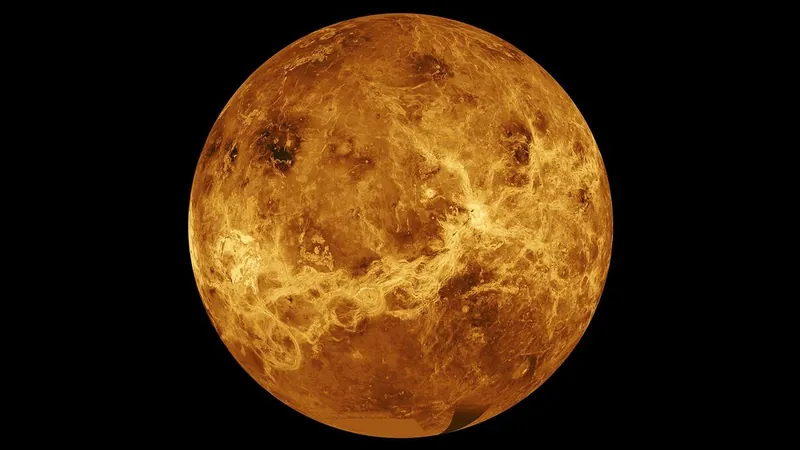
The 2025 Celestial Spectacle: Catch Venus, the 'Evening Star,' Like Never Before!
2024-12-28
Author: Ying
In early 2025, sky enthusiasts are in for a treat as Venus, often celebrated as the "evening star," will shine brightly in the southwestern sky after sunset, captivating stargazers and casual observers alike. This remarkable phenomenon occurs approximately every 19 months, when Venus steps into the spotlight as it approaches Earth.
The Dance of the Evening Star
Venus is unique among the planets in our solar system; its orbit is nestled between that of Earth and the Sun. Therefore, it never strays far from the Sun in our sky. This leads to its alternation between being the "morning star" and "evening star," a cycle that happens every 584 days—a little over a year and a half. The intricacies of Venus’s orbit mean that every 225 days, it completes a lap around the Sun, yielding a mesmerizing pentagram pattern in the sky over an eight-year period from Earth’s perspective.
Venus dazzles most vividly when it comes in close proximity to Earth, reflecting abundant sunlight due to its thick cloud cover. Expect its brilliance to peak in early 2025, making for some unforgettable views.
Noteworthy Highlights for 2025
As we move into January and February, it’s essential to mark your calendars for the following key dates:
- January 10, 2025: Venus reaches its greatest elongation east, rising high above the western horizon after sunset. This positioning marks its furthest point from the Sun in the current apparition.
- Dichotomy: Shortly after, Venus will reach dichotomy, signifying that it appears as a half-lit disk from our vantage point on Earth. This astounding phase change offers a fascinating opportunity to see the planet transform.
- February 19, 2025: Venus will glow brilliantly at a magnitude of -4.9, illuminating the evening sky. By this date, its illuminated portion will reduce to a mere 23%, presenting a stunning crescent shape.
Astrophotography enthusiasts can seize this opportunity to capture the planet’s phase progression using telescopes. Observers will notice a significant increase in the size of Venus’s disk—around 60%—from January 12 to February 16, showcasing the planet's transformation from a crescent to a more substantial shape.
The Transition from Evening to Morning Star
After its spectacular display as the "evening star," Venus will begin to fade from view in March as it shifts into the Sun's glare. By April, it will re-emerge as the "morning star," offering early risers a chance to enjoy its beauty at dawn.
In addition, for those eager to dive deeper into the world of astrophysics, consider exploring telescopes and binoculars tailored for celestial observation. Not only will these tools enhance your experience of Venus, but they can also help you capture breathtaking images of other celestial bodies.
As we gear up for this astronomical event, be sure to keep an eye on the night sky. You won't want to miss witnessing the brilliance of Venus lighting up our horizons in 2025!





 Brasil (PT)
Brasil (PT)
 Canada (EN)
Canada (EN)
 Chile (ES)
Chile (ES)
 España (ES)
España (ES)
 France (FR)
France (FR)
 Hong Kong (EN)
Hong Kong (EN)
 Italia (IT)
Italia (IT)
 日本 (JA)
日本 (JA)
 Magyarország (HU)
Magyarország (HU)
 Norge (NO)
Norge (NO)
 Polska (PL)
Polska (PL)
 Schweiz (DE)
Schweiz (DE)
 Singapore (EN)
Singapore (EN)
 Sverige (SV)
Sverige (SV)
 Suomi (FI)
Suomi (FI)
 Türkiye (TR)
Türkiye (TR)